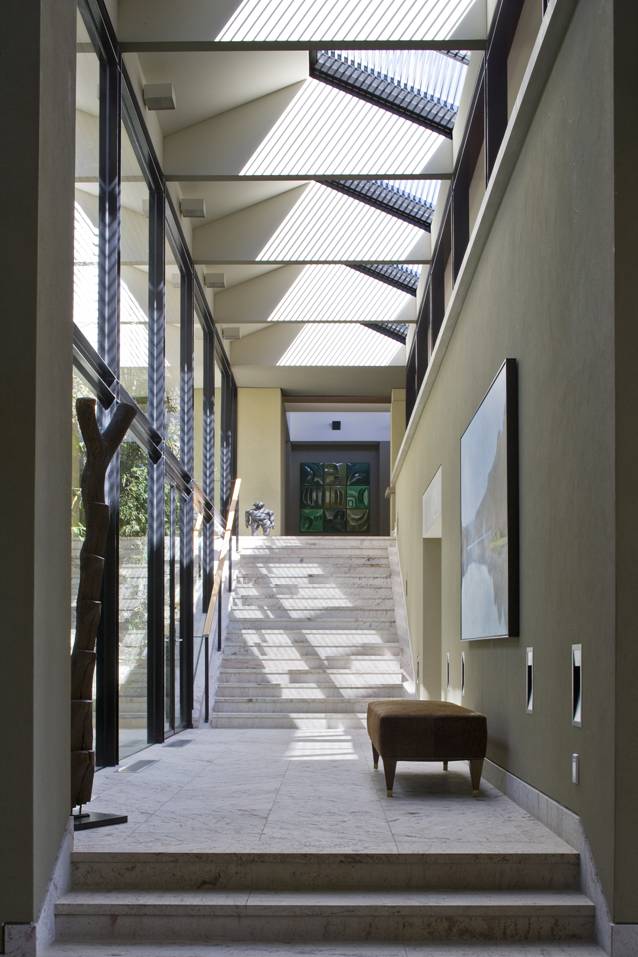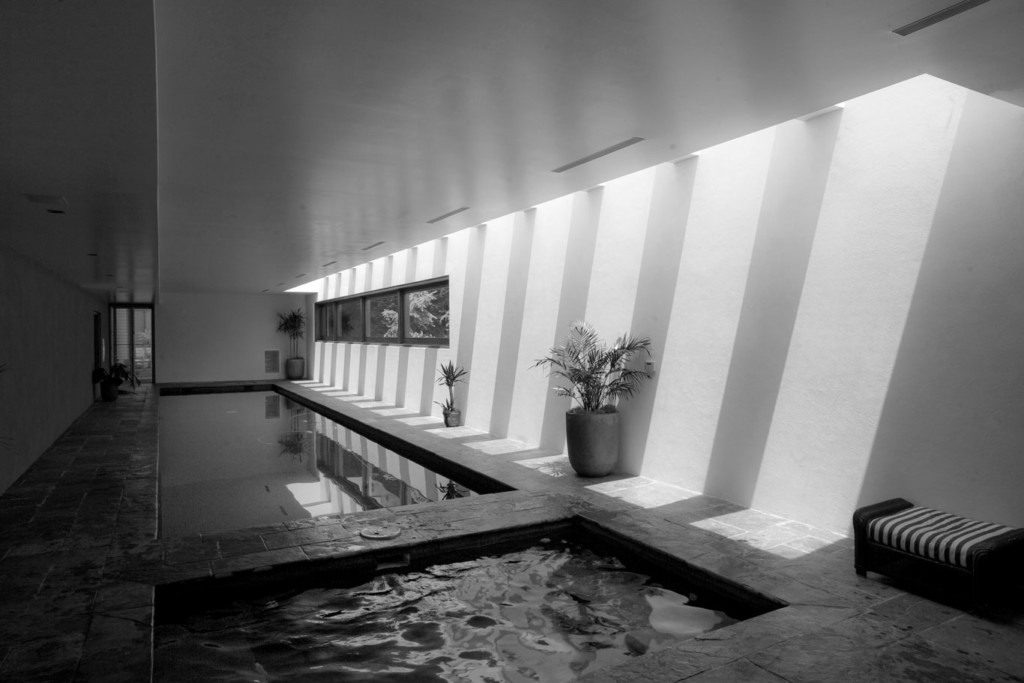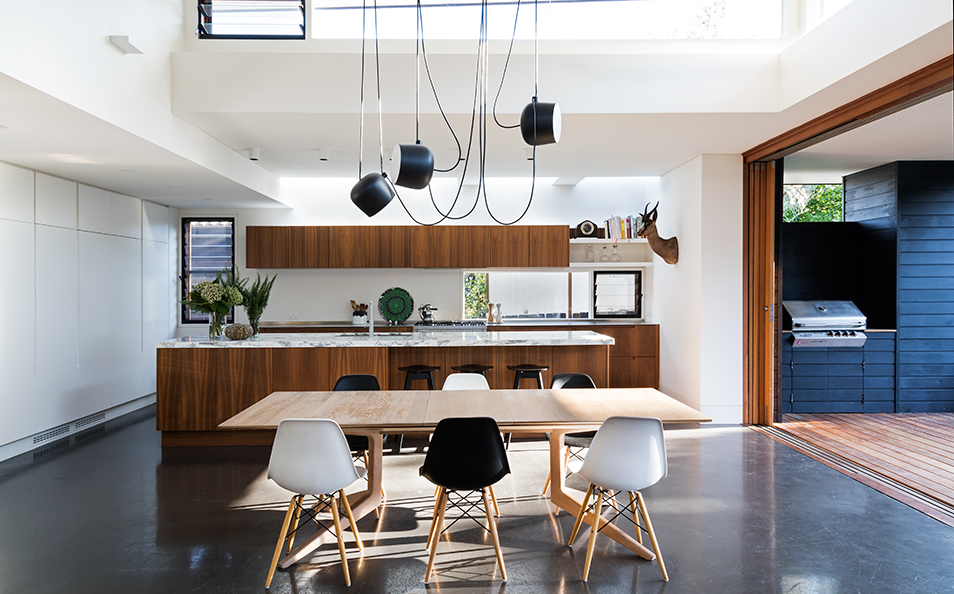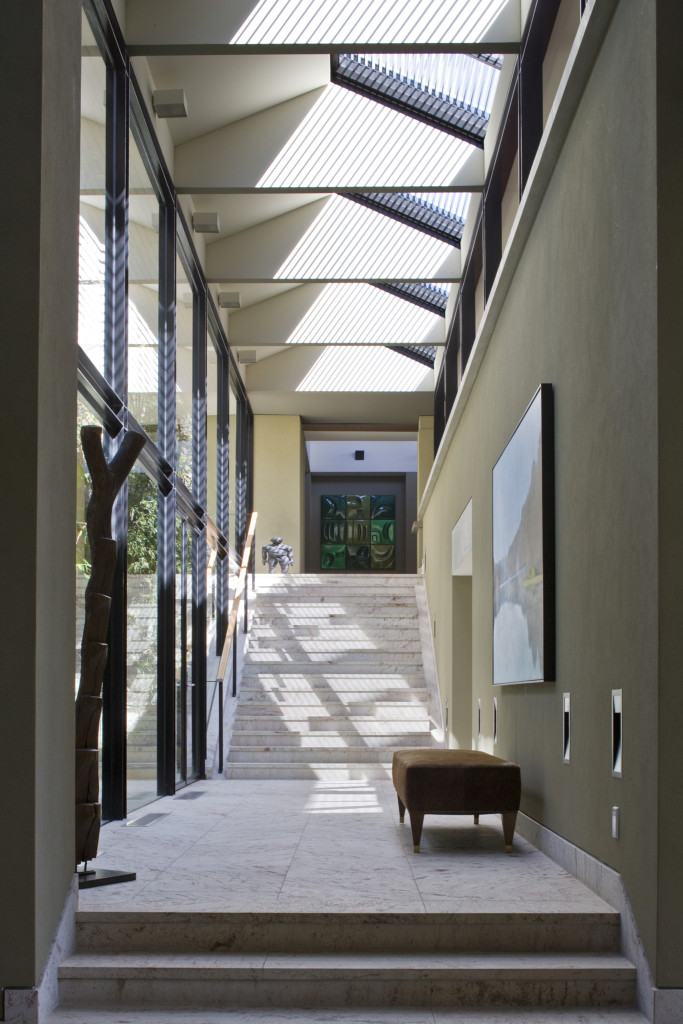Even if a house has sufficient natural light, installing skylights or highlight windows give a soft, interesting light generally in the back areas of a room and can assist with cross-ventilation.
Skylights often look less intrusive when the ceiling helps sculpt the space around it. Examples of this are seen in some of our houses below.
Firstly, at our Block House at Pearl Beach we designed double-glazed roof lights at the sides of the house on the ground floor level, providing filtered light into the rumpus, living and kitchen spaces. The plasterboard ceiling from each room continues across the roof-light and forms blade divisions which make the space and light patterns more interesting throughout the day.
Block House Pearl Beach : Rumpus Room roof lights Photo by Brett Boardman
Another example of these roof lights are in an indoor pool at our Country Estate in the Southern Highlands, NSW which give an interesting play of light that casts lovely shadows that dance across the room.
Country Estate : indoor pool Photo by Giles Westley
And the new living space at our recently completed Waverley House is sculpted with high light windows and skylights. Not only does the glazing make the building look and feel lighter, it also assists with cross ventilation, especially important as this house has been designed without air-conditioning.
Waverley House : Living/Dining space. Photo by Andrew Worssam
Lastly at the entry of our Vaucluse House, skylights are used to shape the pitch roof to give a grand scale to the large residence. The light again is playful throughout the day and the horizontal divisions between the skylights break up the long corridor.
Vaucluse House : Entry corridor skylights




